Whenever I watch other flycasters, I have a habit of analyzing their casting. I mentally deconstruct their strokes to determine which parts are technically sound, and which parts wither under scrutiny. I ponder what suggestions for improvement I'd pass along if asked, and how I might phrase the wording of those suggestions. Many flaws of technique require a wholesale rebuilding of the casting stroke. Others are more easily fixed. Among the latter is off-plane movement of the rod, a common reason why many fishermen struggle to place their fly where they’re aiming.
Moving the rod in a single plane from the start of a cast to its finish (curve casts and reach casts excepted) is a real key to accuracy. Because the fly line always follows the rod tip, restricting the rod to a single plane forces the line to follow in that same plane. The line scribes a perfectly straight path, facilitating accuracy. Anytime our rod veers off-plane, curves and waves appear in the line. Figuring out where to aim a wavy cast so that the fly ends up on target is no mean feat, usually requiring guesswork and a good dose of Kentucky windage. Much better to simply keep the rod in one plane. As long as that plane lines up with the target and the distance of the cast is controlled, the fly will land where it's aimed.
When I say to keep the rod in one plane, note that I'm not specifying at what angle to the ground that plane should be. That's for you to choose. Typically, it will be somewhere between straight overhead (90 degrees to the ground) and sidearm (parallel to the ground).
Casting straight overhead provides the greatest accuracy (it's my recommended default position), but particular fishing situations often call for something else. The critical thing is that the rod travels in one plane, regardless of the angle that plane is at relative to the ground.
To see how this works in practice, grab the butt section of your rod. Stand next to a wall so that the shoulder of your casting arm just touches the wall. Simulate the casting stroke, keeping the butt section parallel to the wall. This is how it feels to be on-plane (in this case, in the vertical plane).
Now step away from the wall and angle the rod 45 degrees to the floor. Simulate the casting stroke again, taking care to keep the rod in the same plane through the entire stroke. Try this exercise at all angles.
Inaccuracy isn't always fatal to success, but it proves fatal often enough. Minimize those times by becoming a more accurate caster. It's not difficult to do and a good way to start is by keeping your rod on-plane.




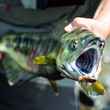





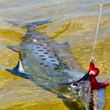





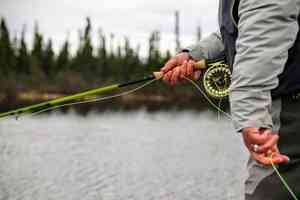

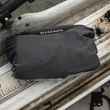

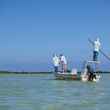




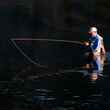



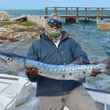
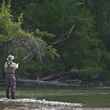
Comments
Jack Crais replied on Permalink
So, how do you explain those who use the Belgian cast with accuracy or Spey/Skagit casting?
John Juracek replied on Permalink
They keep the rod on one plane on the forward stroke, but not necessarily in the vertical plane...
Timothy Grey replied on Permalink
Respectfully, what does that mean? Your explanation of "plane" is more than confusing. "They come forward in the same plane but not necessarily the same vertical plane?" Well how many planes are there, John? Have you thought this through? If so, why not include it in the article? To most of us, casting in the same plane means the line will hit itself on the forward cast. That's just the way it is. Most good casts have a slight oval at the rod tip. That's The only way to keep things clear of themselves. If you know another way of casting, please explain.
John Juracek replied on Permalink
That isn't the way it is. With certain exceptions (curve, reach, Belgian, spey) good casts do take place in one plane. The likely reason you are hitting your line when coming forward—and therefore feeling the need for a slight oval—is that you are not raising your elbow on the backcast, and lowering it on the forward cast, thus providing clear air space for the line to travel in. Do this and the line will not run into itself. You can see examples of this on my YouTube channel, with more description there. Hope this helps.
FRANK CADA replied on Permalink
With Spey casting the plane you need is defined by the anchor point.
Anonymous replied on Permalink
Is that Peter from Patagonia River Guides????
Chad Shmukler replied on Permalink
Campbell replied on Permalink
Is it ok for the back cast and the forward cast to be on different planes?
Danilushka replied on Permalink
Generally no. While keeping the line in the same plane on the forward stroke is key, moving planes dissipates energy as it directs the force and, worse, it makes it harder to keep the forward stroke co-planar because you are fighting momentum in the wrong plane from the backcast.
Anonymous replied on Permalink
Yes. That's what the "Belgian" cast does. The backcast is in one plane, typically low and off to the side, the forward cast is in another plane, typically closer to vertical.
Bernd Ziesche replied on Permalink
Hello John,
Keeping the rod in one plane only is a proper advice. (agree)
"Because the fly line always follows the rod tip,... The line scribes a perfectly straight path, facilitating accuracy."
The fly line hardly ever follows the rod tip, especially the end of the line doesn't! In fact the end of the line can travel opposite to rod tip direction at times. Our fly lines never ever move straight. Every part of our line moves in a different path, none will ever be that of a straight path for sure.
Kind regards
Bernd
John Juracek replied on Permalink
Bernd,
To keep things simple, I have purposely glossed over a lot of the details regarding what the rod tip does and how the fly line responds. Of course you're right—no argument there—but for practical purposes, I think my description is acceptable. Thanks.
Pages